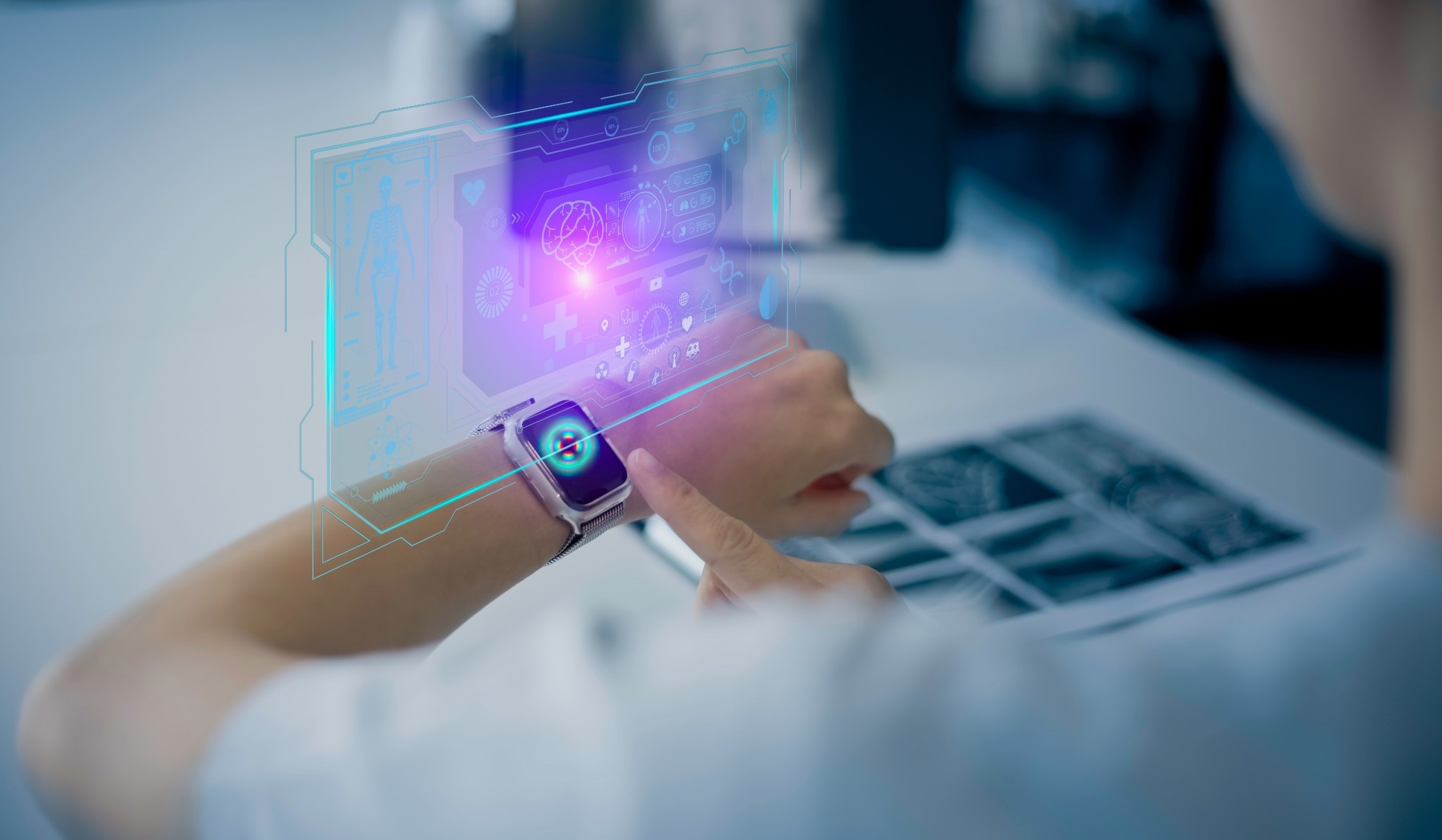In a review published in Communications Materials, researchers discussed the recent advances and barriers in the development of a digitally connected body via a network of wearable sensors and bio-interfaces.
They further highlighted the need for holistic device ecosystems for the comprehensive and long-term monitoring of health.
 Study: Towards a digitally connected body for holistic and continuous health insight. Image Credit: SOMKID THONGDEE/Shutterstock.com
Study: Towards a digitally connected body for holistic and continuous health insight. Image Credit: SOMKID THONGDEE/Shutterstock.com
Background
Advancements in noninvasive skin sensors, such as epidermal electronics, offer insights by capturing fluids and providing unique physical properties, enabling more sophisticated sensing beyond traditional methods.
These sensors include biochemical and biophysical capabilities, allowing the measurement of markers like cortisol as well as insights into physiological stresses. Translating these innovations from the lab to clinical or home use faces challenges which may be categorized into (1) material and interface, (2) integration, and (3) adoption-related challenges.
Widespread adoption of these innovations hinges on materials compatible with smart interfaces, skin renewal, and seamless integration into healthcare systems. Such systems can potentially have a significant impact on disease monitoring and treatment for enhanced population health.
Materials and interface challenges
Wearable bio-interfaces face fundamental challenges, particularly when adhesively attached to the skin, such as limited operational duration due to epidermal turnover and potential user discomfort.
Various device classes are commonly used: (a) conventional brick and strap, (b) epidermal electronics with adhesive skin attachment, and (c) a hybrid combining adhesively coupled epidermal devices with reusable electronics attached magnetically.
While brick and strap devices offer reliability and commercial viability, epidermal electronics provide conformal contact, reducing motion artifacts but face challenges in adhesive attachment and larger footprints. The hybrid approach combines disposability with reusable components but introduces complexity.
Sensors are limited by biochemical degradation and biohazard concerns with sweat channeling. Epidermal platforms minimize motion artifacts but require attention to system-level mechanics for chronic stability.
Noninvasive stimulators are classified as haptic, electrical, and thermal stimulators and are crucial for chronic use. However, they require high energy supplies, making them challenging to achieve.
Encapsulation methods for chronic wearable devices involve overcoming mechanical and fluidic challenges, especially for flexible, high-fidelity epidermal devices. Innovative strategies like serpentine interconnects and dielectric encapsulations may be used to overcome these challenges.
Integration challenges
Wearable device integration impacts comfort, stability, and sensor performance. The need for high power supply is identified as a major challenge, limiting the continuous operation of devices.
Traditional batteries offer limited run times (1–2 days) for high-fidelity, multimodal devices, necessitating frequent recharging and affecting user retention.
Various wireless power transfer methods are currently in use. Biosymbiotic devices are recharged via far-field power casting for seamless 24/7 operation. Photonically powered devices utilize perovskite solar cells and wireless power distribution via textiles.
Harnessing ambient energy sources and power supplies carried by users, such as electromagnetic radiation from smartphones, provides solutions for distributed sensing and reduces user fatigue.
Material platform considerations for wearable devices involve scalability challenges and compromised conformality. Successful translational activities make use of materials like thermoplastic urethane (TPU) and polyimide.
Communication methods are important considerations for wearable devices. Approaches based on bluetooth low energy (BLE) and near field communication (NFC) are commonly used.
Computation is crucial for large datasets and may benefit from machine learning and artificial intelligence-based methods. Based on power analysis of the clinical requirements, data analysis may be performed on device or via cloud.
Adoption challenges
User acceptance is a critical aspect of wearable device impact, with factors like privacy, wearability, ease of use, data accuracy, and perceived value influencing retention rates.
For common health status capture devices, the average retention rate is only 50% over six months. Commercial success is not guaranteed, given challenges like interoperability, medical community acceptance, and insurance coverage creating high entry barriers.
Regulatory certifications like FDA approval and CE marking, crucial for maintaining trust, contribute to a slow innovation process, making the development of new technology a high-risk endeavor. Despite exciting technology, slow adoption can significantly hamper the success of a device.
Examples of multimodal chronic wearables
The biosymbiotics form an interesting wearable device class. They capture high-fidelity biosignals continuously without interruption.
These devices attach epidermally via soft mesh structures, conforming to the body without adhesives, allowing for extended usage over weeks. Far-field power casting recharges the device, providing 24-hour autonomous operation and allowing recharging in proximity to a power caster.
The devices maintain functionality during various activities, including showers, capturing data streams at high sampling rates, such as bicep contractions and high-resolution skin temperature measurements, not achievable with traditional wearables.
Conclusion
Wearable high-fidelity skin interfaces offer advanced insights, but their successful deployment requires key advances in materials for chronic use.
Strategies involving materials like hydrogels and ultra-thin substrates with low impedance interfaces enable seamless attachment to the skin, supporting continuous high-fidelity interfaces over weeks.
Widespread adoption of devices hinges on creating seamless system-level approaches connecting various interface types, application timeframes, and aspects of communication, computation, and powering strategies.
Technologies like wireless power casting, low-power mesh networks, and neural computation may facilitate faster dissemination of this device class.
Overall, these advancements hold great potential for impacting life expectancy and population health, especially by enhancing cardiac disease detection and treatment.